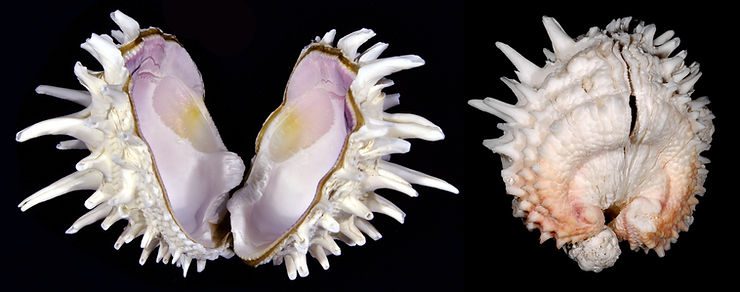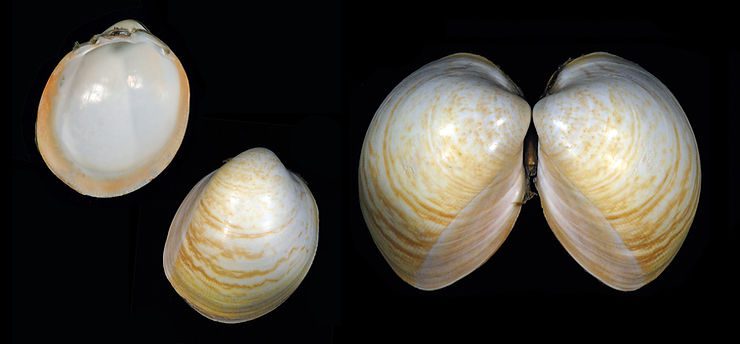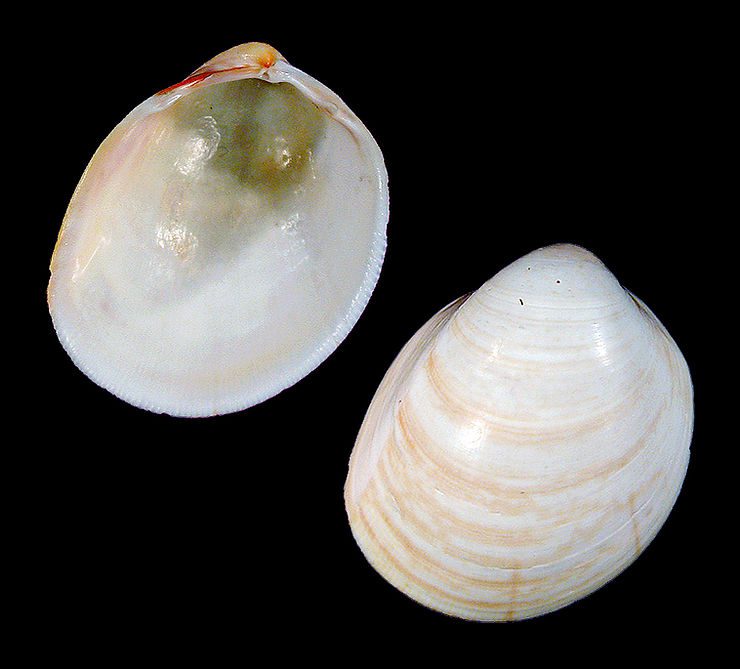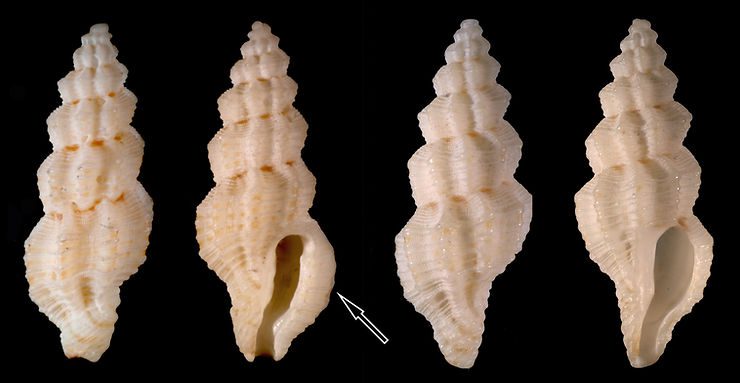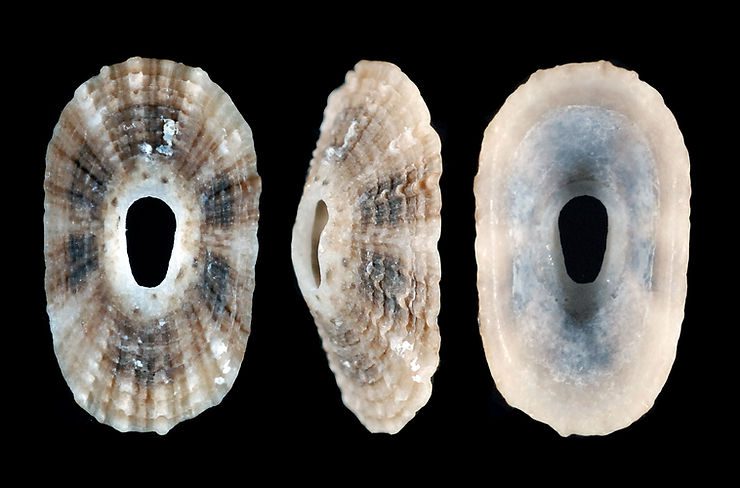
The Colorful Moon Snail
The Colorful Moon Snail, Naticarius canrena (Linnaeus, 1758), belongs in the category of "most desirable shell finds" locally. Colorful Moon Snails are in the same group (family Naticidae) as the Shark Eye, but unlike this latter species, which has a brown, proteinaceous, "soft" operculum (plural opercula), Colorful Moon Snails have opercula made of shell material, or calcium carbonate. The sculpture of the operculum in the family Naticidae is important in the classification of the different spe

